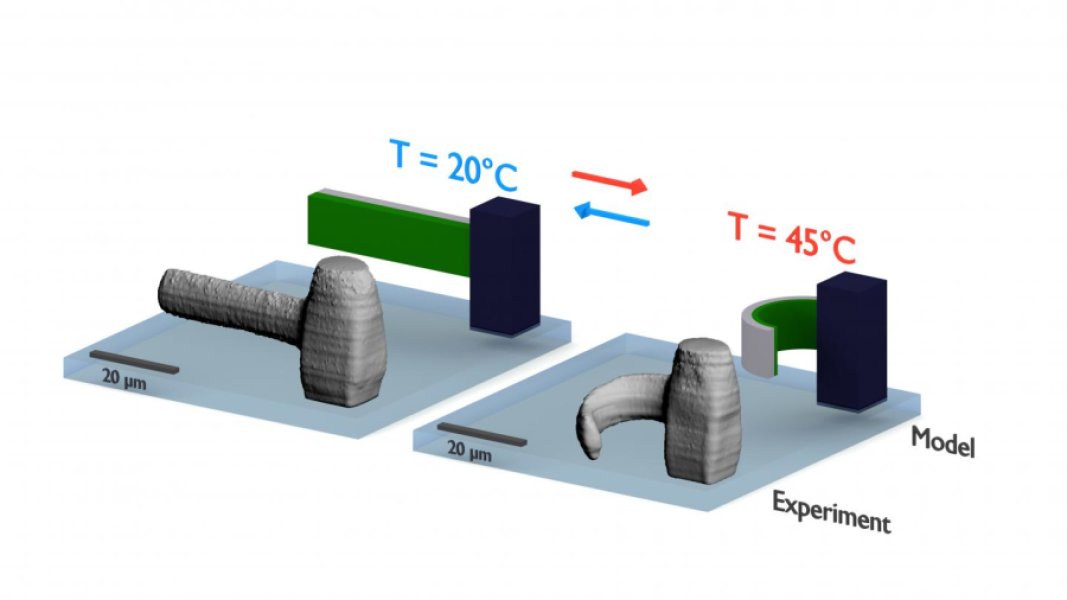Welcome to the second edition of CrAMmed, our 3D printing news digest based on the latest academic additive manufacturing research.
Today, CrAMmed presents research from Wageningen University and Research (WUR), who 3D printed the color changing Lycurgus Cup; the University of British Columbia (UBC), where an additively manufactured artificial nose has been produced for gas leaks; and the Polytechnic Institute of Leiria , where 4D bioprinting is explored for advanced implants.
The 3D printed color-changing Lycurgus cup
Researchers from Wageningen University and Research (WUR) in the Netherlands have incorporated dichroic (color changing) nanoparticles in PVA filament to 3D print the Lycurgus cup. This unique material was developed to replicate the 4th-century Roman glass cage cup which was made of dichroic glass.
The Lycurgus was revered for its ability to change color depending on the light passing through it.
The research states, “the 3D printed objects can be coated to achieve water impermeability and stability at room temperature for a long time [and] we envision this methodology to be used not only by artists, but also for studying optical properties of nanoparticles or, for example in 3D fabrication.”
“Plastic Embedded Gold Nanoparticles as 3D Printing Dichroic Nanocomposite Material” is published in ChemRxiv. Vittorio Saggiomo, an Assistant Professor in BioNanoTechnology at WUR, led this study.

A 3D printed nose detects gas leaks
Engineers from the University of British Columbia (UBC) have developed 3D printed microfluidic gas detectors. Mina Hoorfar a Professor in the School of Engineering at the UBC Okanagan said, “our sense of smell is one of the most important abilities humans have.”
“Our nose affects the quality of our lives significantly and helps with the detection of toxic gases in the environment, fire awareness, spoiled food or triggering memories. With this in mind, there has always been interest in developing devices that can mimic human olfaction systems.”
The detectors comprise of 3D printed microchannels and a metal oxide semiconductor and can be connected to a sampling chamber. There are two channels with different coatings in the detectors. The internal coatings direct the gases to the appropriate sensor where the gas is analyzed.
“Selective detection of volatile organic compounds in microfluidic gas detectors based on ‘like dissolves like’” is published in Nature. Doctoral student Mohammad Paknahad, is one of the lead researchers in the project.

Researchers from the Karlsruher Institut für Technologie (KIT) have used gray-tone lithography to 3D print microstructures that can change shape under the influence of temperature or light. According to the study, Poly (N-isopropylacrylamide) (pNIPAM), a temperature-responsive polymer, is used to create complex actuation patterns.
“For many applications, particularly in biology and biomedicine, it would be desirable not only to produce rigid structures but also active systems that are still movable after the printing process, e.g., that can change their shapes by an external signal,” explained Professor Martin Bastmeyer from KIT’s Zoological Institute and Institute of Functional Interfaces.
The 3D printed microstructures could be used, for example, in microfluidic systems, and additional applications in biological research, i.e., the targeted mechanical manipulation of individual cells.
“Controlling the shape of 3D microstructures by temperature and light” is also published in Nature.

Katie Kilcoyne, a BE graduate in chemical and bioprocess engineering from the University College Dublin (UCD), tested three 3D printers for the fast and cost-effective production of microfluidic devices.
This experimentation was done to demonstrate the potential of creating lab-on-a-chip (LOC) and pharmaceuticals which are typically produced via large-scale, equipment-intensive, multi-stage, batch processes.
The Ultimaker 2 (FFF), the Objet Eden 260V (Polyjet), and the Form 2 (SLA) were used in this experimentation. Kilcoyne found that the Objet Eden 260V showed the most promise for closed microfluidic structures (> 100 μm), despite the hurdles of clearing support material from smaller channels.
“3D printing of microfluidic devices: An experimental evaluation of selected printers” is published in Engineers Journal.

Exploring 4D bioprinting and regenerative medicine
In an international research article, scientists 3D printed articular cartilage and subchondral bone, a layer of bone below the cartilage in a joint, into osteochondral defects in mini-pigs.
An osteochondral injury disrupts the smooth surface on the end of bones. This can cause a small crack to a piece of the bone breaking off inside the joint. The 3D printed cartilage composed of mesenchymal stem cells derived from fat tissue.
The study notes that the 3D constructs aided in the regeneration of the subchondral bone in a non-load bearing site of a large animal stifle joint.
“Osteochondral regeneration using constructs of mesenchymal stem cells made by bio three‐dimensional printing in mini‐pigs” is published in Wiley. Atsushi Yamasaki is the first author of this article.

A team from the Centre for Rapid and Sustainable Product Development (CRSPD) of the Polytechnic Institute of Leiria, Portugal, has reviewed the possible mechanisms that support 4D bioprinting. This is intended to lead to 3D printed constructs that are responsive to preplanned stimuli.
“Four-Dimensional Bioprinting for Regenerative Medicine: Mechanisms to Induce Shape Variation and Potential Applications” is published in ResearchGate. Pedro Morouço and João Gil of CRSPD co-authored this review.

It’s not too late, nominate an academic or research team for the upcoming 3D Printing Industry Awards 2019.
Want the latest 3D printing news? Subscribe to the 3D Printing Industry newsletter, follow us on Twitter and like us on Facebook.
Looking for a fresh start this year? Visit 3D Printing Jobs to commence your career in additive manufacturing.
Featured image shows the CrAMmed logo over the 3D printed dichroic Lycurgus cup. Image via WUR.

